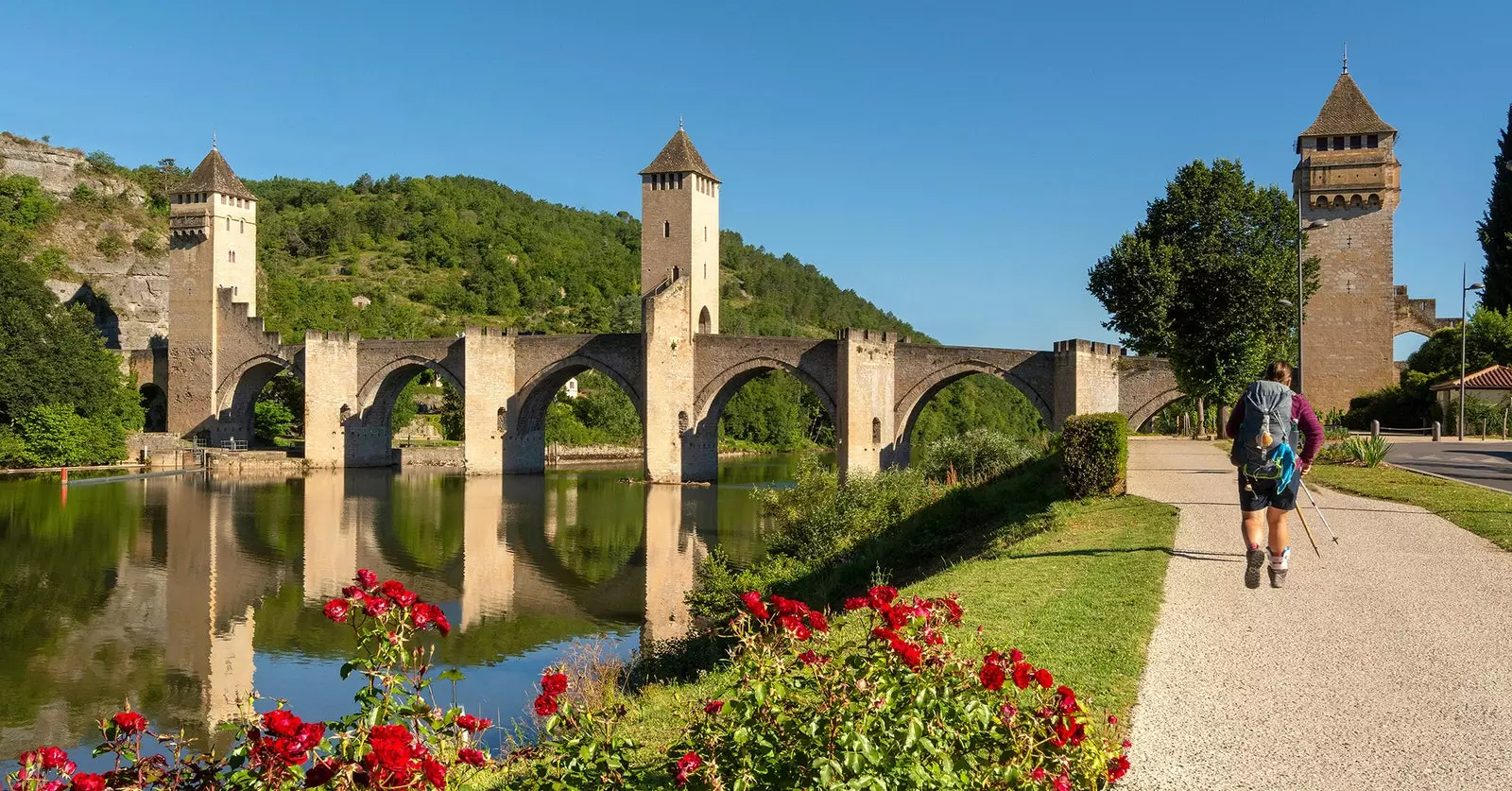
Remember, it's just walking: one foot in front of the other
You decide what you are going to do Santiago's road suddenly. At a given moment, without great ceremonies or solemnities, that idea that had always orbited our thoughts materializes by becoming a certainty. So you know you're leaving.
You calculate available vacation days, blocks period in the office and… And now that? What path do I do? Where do I start to get to Santiago with the days I have? When do I start training? How much do I train? What footwear do I take? Where I am going to sleep? Am I going alone or not?
And in the midst of so much confusion, a slogan, fear stays at home; and a mantra: it's just walking, one foot in front of the other. From there, all questions have an answer.
WHICH WAY DO I DO
In Europe there is 80,000 kilometers of Caminos de Santiago, 256 paths marked as European Cultural Route. They are data from the Association of Friends of the Caminos de Santiago de Madrid , who explained to Traveler.es that the country with the most roads is France , with 56 and 17,000 kilometers; follows him Germany , with 49 roads and 15,500 kilometers; and, finally, ** Spain ,** which has 49 paths and 15,000 kilometers.
So which one do we choose? “If it is the first time, the French Way because it is the one with the greatest infrastructure , the largest number of pilgrims, the one that is best signposted (yellow arrows) and, if they are going to do the last 100 kilometres, approximately 80% do the last 100 kilometres, from Sarria ”, says Jorge Martínez-Cava, president of the Association.
HOW MANY KILOMETERS DO I DO PER DAY AND WHERE DO I START TO GET TO SANTIAGO?
“The recommended distance is the one that everyone wants and, of course, without being overwhelmed. It is infinitely better not to finish the road and join it the following year or when you can go with your tongue hanging out to get to the hostel first. You have to do the Camino day by day and you have to enjoy it” , recommends Martínez-Cava.
Bearing this in mind, the average distance can be 15-20 kilometers or even 25 or 30 kilometers. “More is not worth it because you stop enjoying yourself and on the Camino you have to enjoy nature, art, people and if you are going to do 50 kilometers, then do nothing else”.
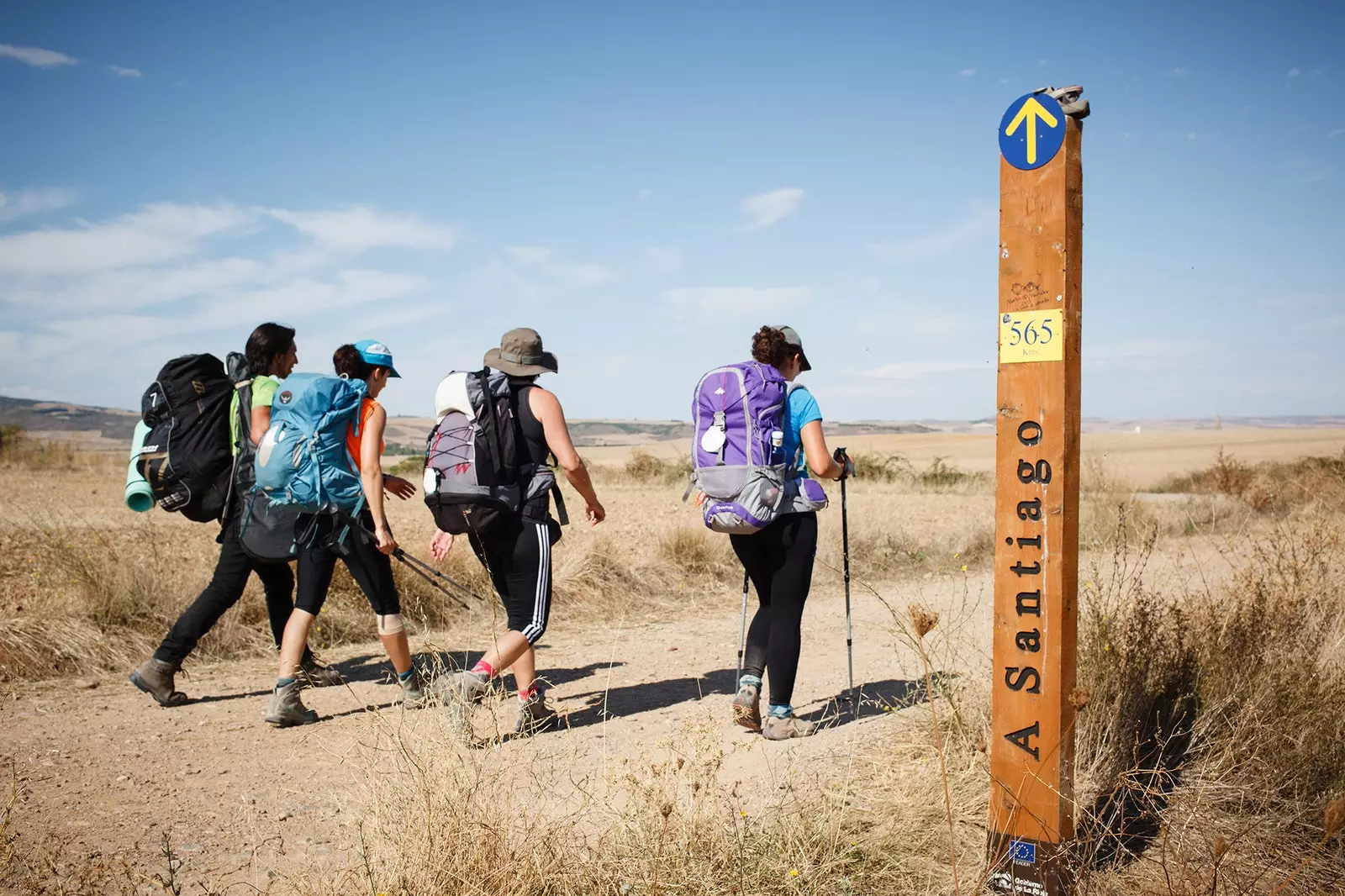
If it's your first time, better in company
ALONE OR ACCOMPANIED?
“If it's the first time, possibly with someone; Unless you are very used to walking. There are people who are scared of going alone, especially women, because of the issue of aggression”, explains Martínez-Cava to quickly clarify that “The Camino is very safe, there are really no problems” and that the aggressions in a place through which some 300,000 people pass each year are equivalent to those that can occur anywhere else.
AVERAGE DAILY BUDGET
"The average budget, not counting trips and if you go to sleep in a hostel and eat a pilgrim's menu, is the equivalent of one liter of Super gasoline per kilometer," Martínez-Cava calculates. In other words, at a euro and a half a liter, if you are going to walk 20 kilometers it would be 30 euros per day.
You are going to spend approx. about 10-12 euros from the pilgrim menu in the evening; more him mid-morning sandwich or the purchase you have to make, another 5 or 7 euros; and between 5 and 12 euros to sleep, plus coffee”.
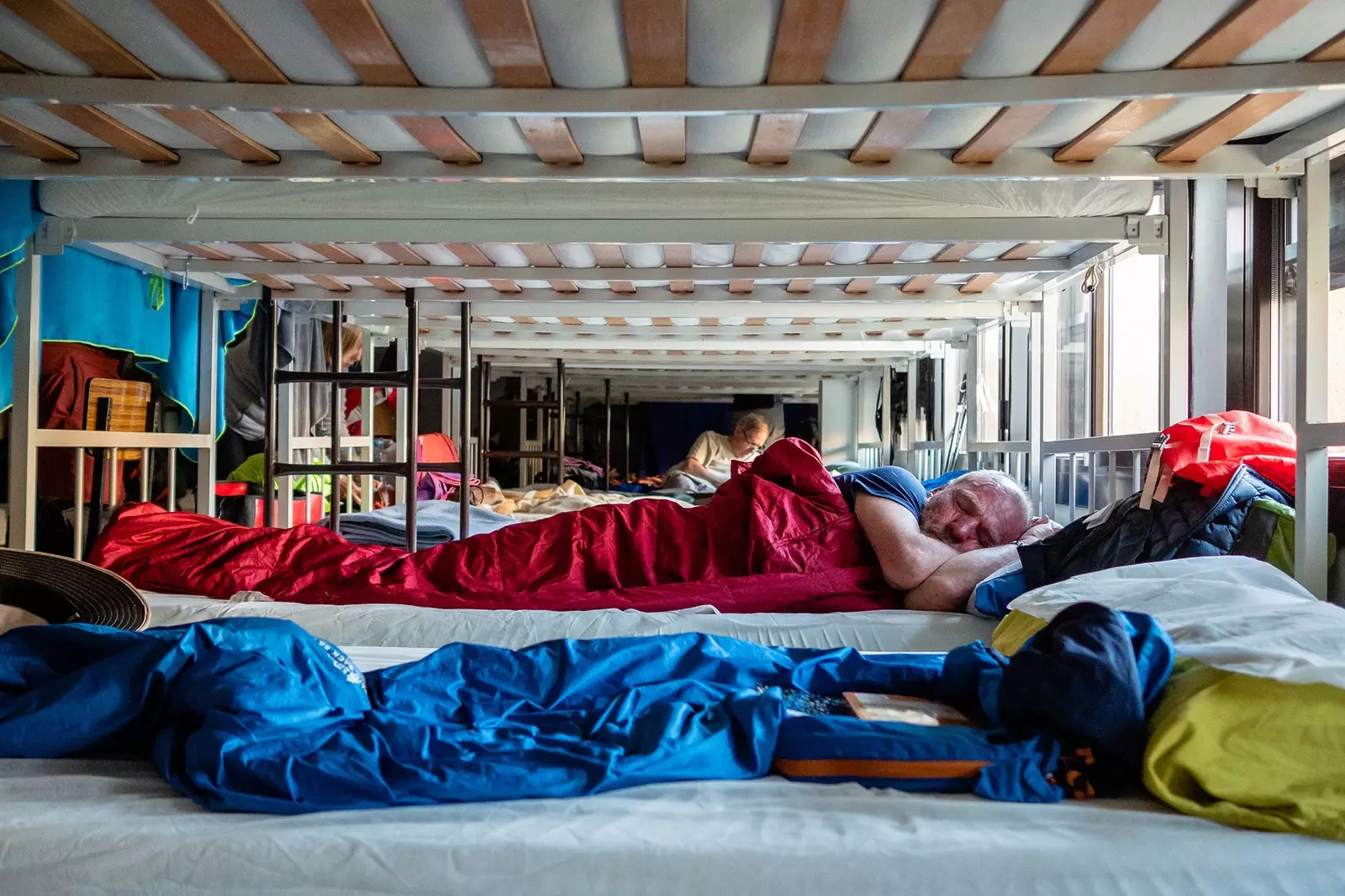
From hostel to hostel and you throw because it's your turn
WHERE I AM GOING TO SLEEP?
And, above all, do I book before starting the Camino or on the go? There are three types of hostels on the Camino: donation, public and private. In the first, the pilgrim freely decides what he pays for his stay, but, and this is important, he pays something; in seconds, the price is usually around 6 euros ; and in the last, It is around 10 euros.
“In the shelters, up to Sarria, up to Galicia, there will be no problem; except in summer, in July, when there are problems everywhere. Starting from Galicia, from Sarria, my recommendation is a private hostel and make a reservation. You get rid of the problem, you ignore getting to the race and you know you have a bed”, reflects Martínez-Cava.
Going to the race, in addition to preventing you from enjoying yourself, is useless. “You will never arrive before the French. No French is known to have done the Camino by day, they start at 4 in the morning. It is known that they are because they move bags and when you wake up at 8, the French have already disappeared, ”he jokes.
BELIEVE... WHAT?
The credential is that kind of fold-out booklet that identifies you as a pilgrim and in which you will be collecting stamps that will certify the places you have passed through.
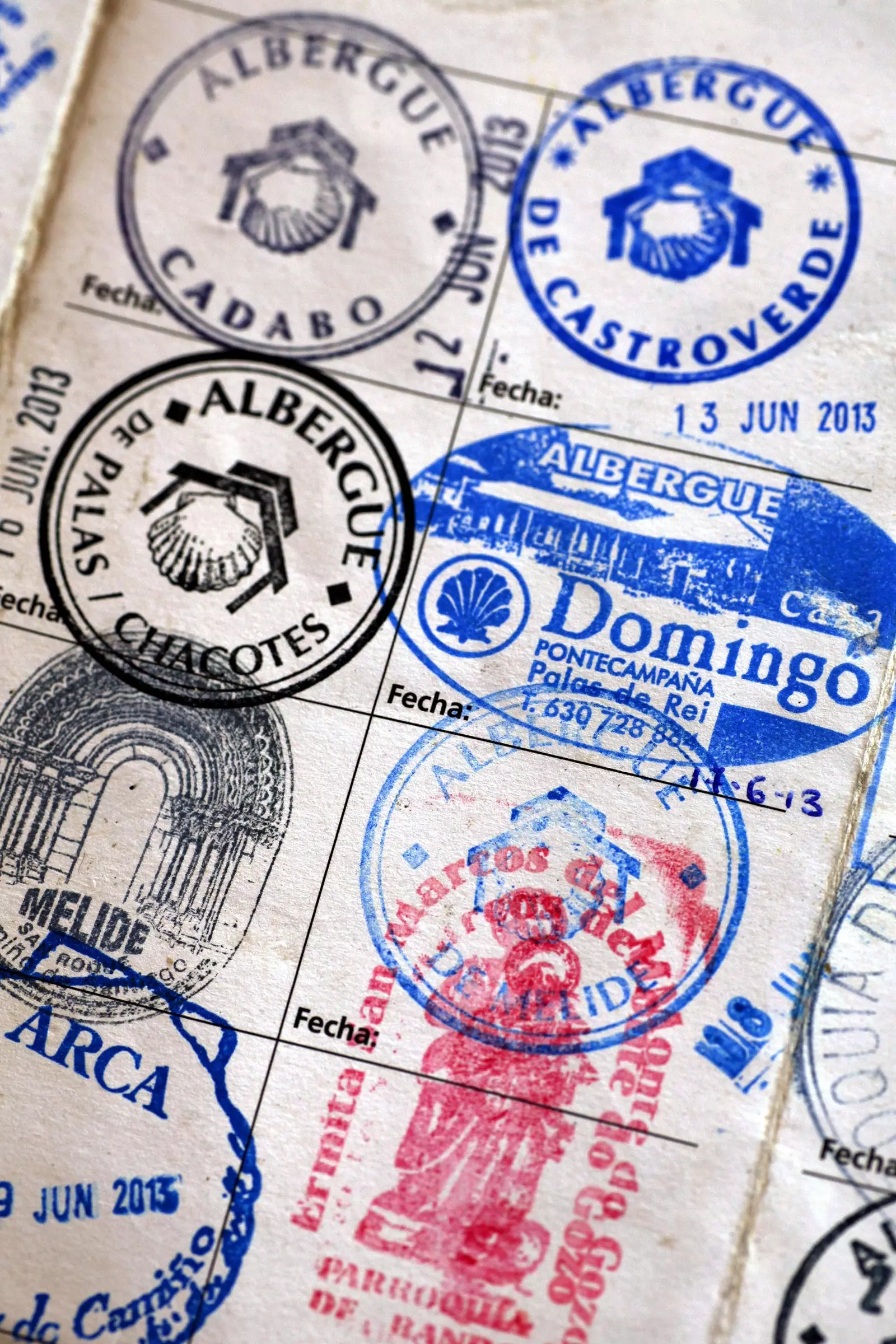
This collection of stamps will be your great pride
“It is the letter of introduction and the card that is used to sleep in hostels and to obtain, if you want, the Compostela, which is the document that certifies that you have done the Camino, at least 100 kilometers on foot or 200 by bicycle”, explains Martínez-Cava.
It has been used since the 10th century. “Before, it was a letter signed by the priest, the mayor, the authority of the town, and it served to say that the person who was on pilgrimage was a good person and that he should be properly welcomed, in a Christian way. It also had another meaning: that of not having to pay alcabalas when entering the towns because you were a pilgrim and you were not a merchant and, therefore, you did not have to pay taxes”.
Nowadays, It is enough to stamp the credential once a day before arriving in Galicia and at least twice once you enter this autonomous community. It can be purchased for about 2 euros in the different pilgrim associations as well as in the place where the Camino is going to start.
DO YOU HAVE TO TRAIN BEFORE STARTING THE WAY?
Yes. It is not necessary to be an athlete, but it is advisable to have a certain preparation. “You have to be used to walking, at a small pace, but hours because in practice you will be walking all day” , explains Martínez-Cava, recalling the importance of make stops every hour, hour and a half to rest and, above all, to enjoy the octopus, the empanada and, why not, the good wine
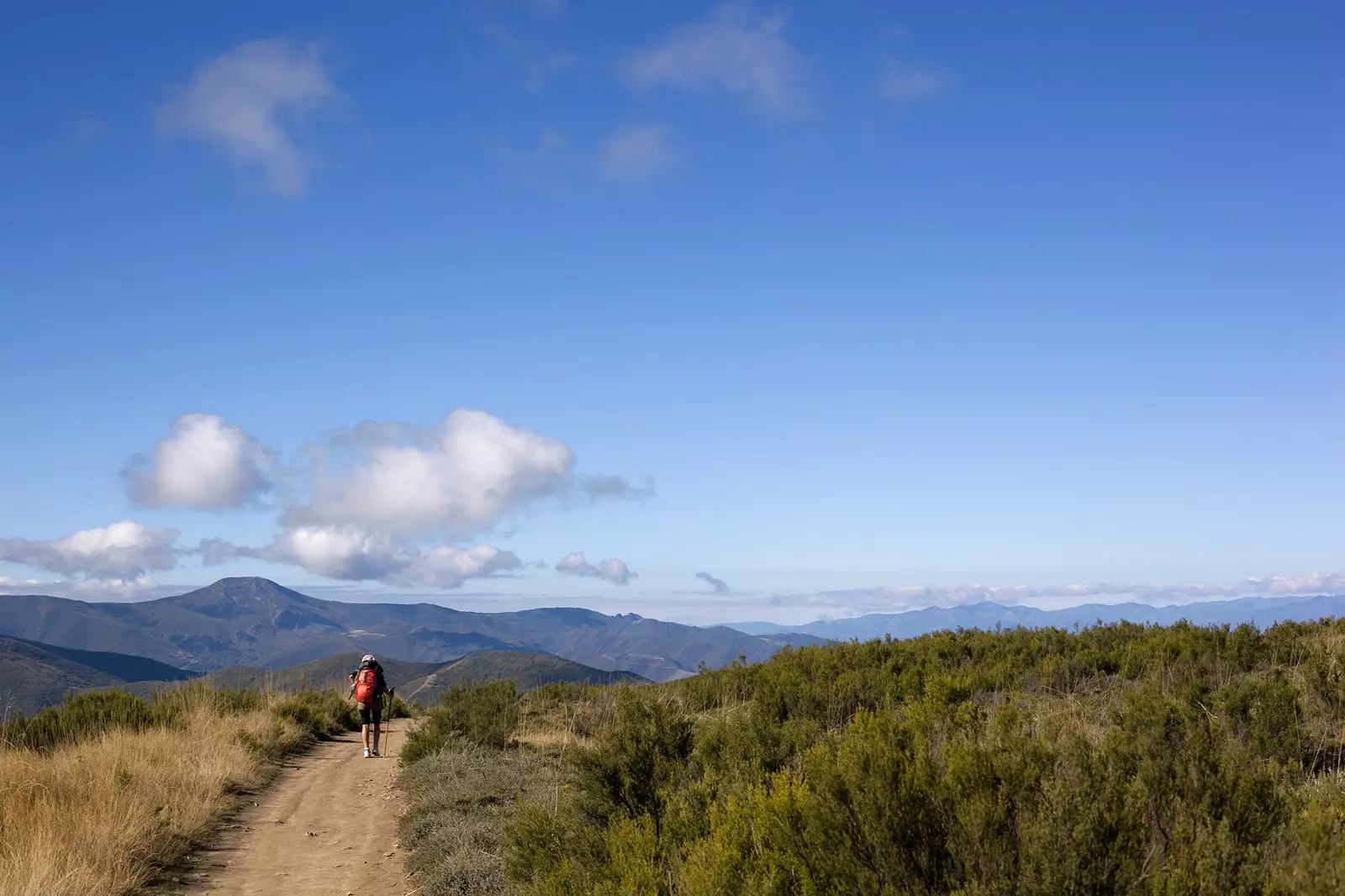
You are going to be walking all day, so you should train
“You have to get used to walking, possibly a couple of months or three before. Walk a little, pick up the pace and get used to carrying weight because, even if it is very little, not all of us are used to carrying seven, eight or nine kilos of weight ”. And this brings us to the next point.
BACKPACK
“To prevent the back from being unnecessarily loaded, it is important that the backpack has good shoulder straps ergonomic, padded and adjustable; Y adjustable belts, for both chest and waist. This allows distribute the loads well and play with them”.
the one who speaks is Carlos Hernandez Delgado **physiotherapist at the Pilates Lab clinic ** who in August 2017 embarked on the Camino Primitivo, from Oviedo to Santiago in 13 stages.
“As for the weight we should carry, 10% of our body weight is usually recommended. In my case, 8 kilos but I think my backpack did not even reach 6 kilos. To get it, I took the smallest one I had, a 25-liter mountain backpack,” advises Hernández.
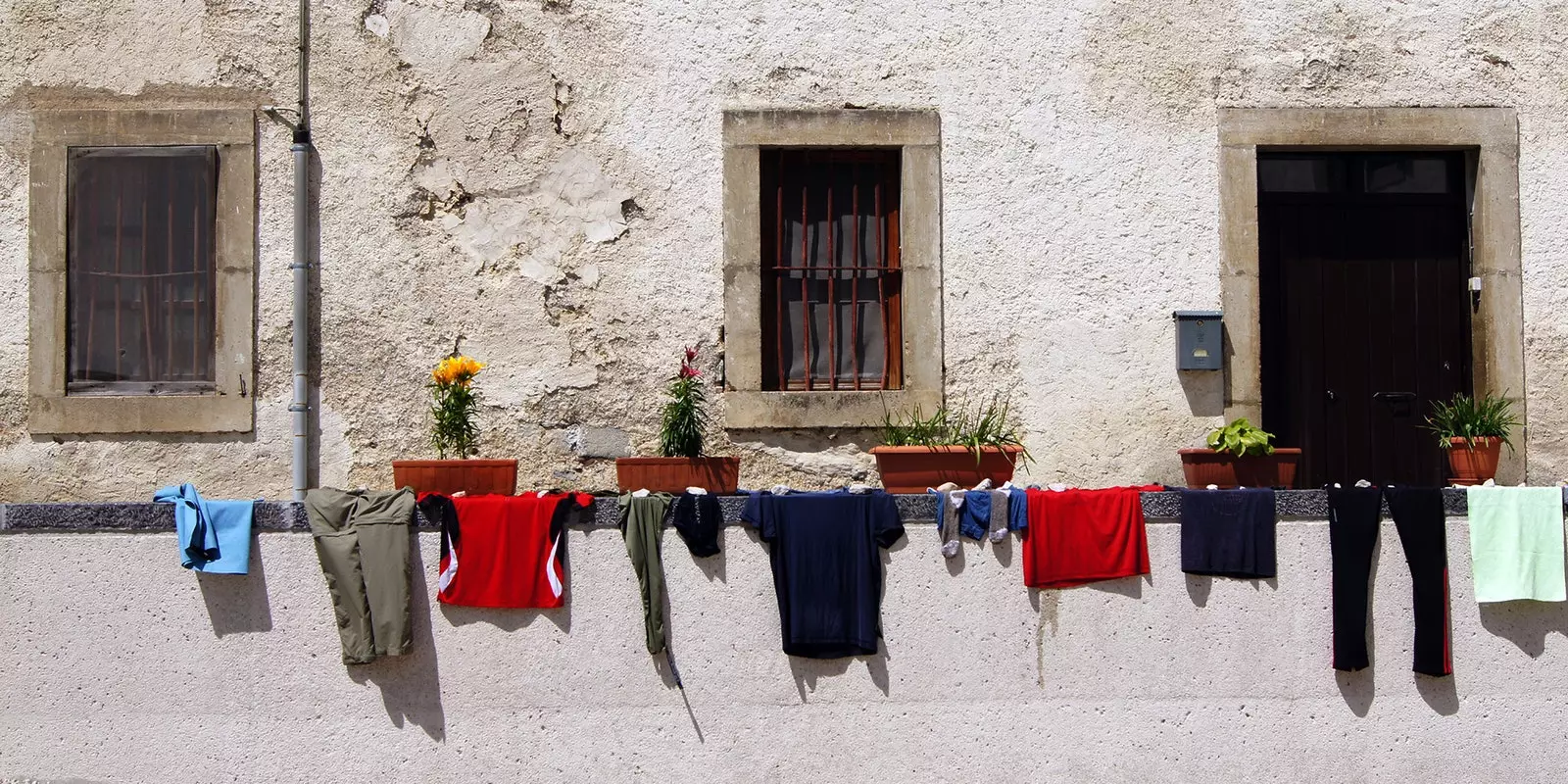
You will be in the middle of nowhere, but you will be able to wash your clothes
“What you have to put in the backpack is exactly half of what you planned to carry. Here we recommend that you fill the backpack and, once full, empty it with the essential things and remove half. Refill the backpack and empty it again and remove half of it again. Literal: 7 kilos of weight”, Martinez-Cava recommends.
And what fits in 7 kilos of weight? “One short and one long or zipper; underwear, the minimum, removable because it can be washed at night and then dried in the backpack for what to wear safety pins. Three shirts: one to sleep in (no need to wear pajamas) and two removable ones; a light fleece, a light jacket, and three pairs of socks to have a spare part”, Martínez-Cava lists, pointing out that this backpack would be for spring, summer and autumn. In winter a little more equipment would be needed.
Also, one cannot forget “cap, dark glasses and strong sun protection cream because you are going to be outdoors for eight or 10 hours and what burns is not only the sun, but being out in the open,” he warns.
It is at this moment that one wonders how he is going to carry so little luggage. “We are not going to the Sahara. If you miss something during the trip, you can always buy it in any town. In this way, you also collaborate with local businesses,” says Hernández, who saw pilgrims carrying one-liter bottles of gel or piles of canned food. “One of the teachings I had from the Camino was that we really need very few things”.
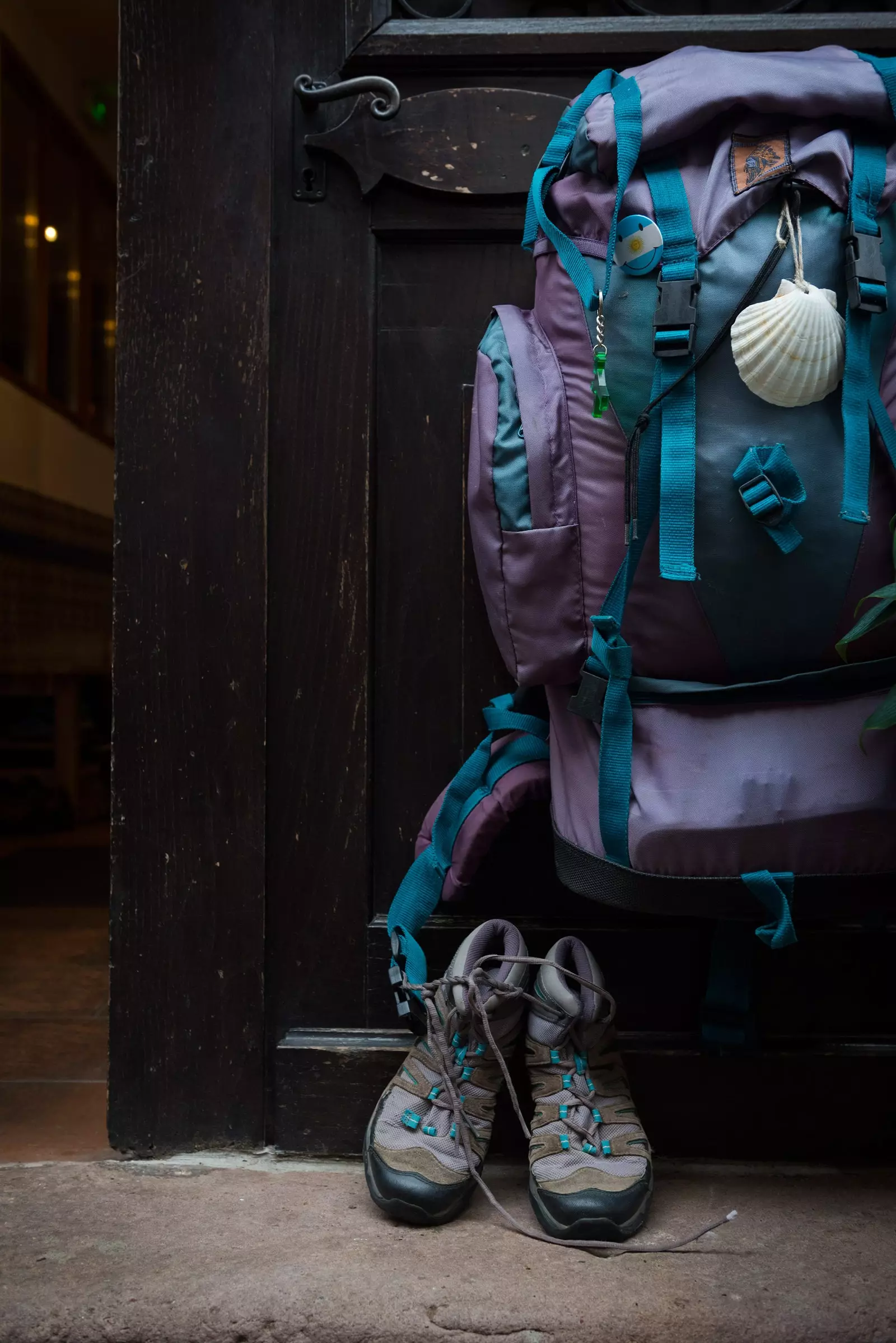
No more than 7 kilos
As a note in case one day we lack the strength, it is convenient to keep in mind that there is the possibility of sending luggage from one stage to another using the services of different private companies or those offered by Correos. This does not mean that you start carrying those cans of preserves.
THE BACK
Much is said about the feet and the dreaded blisters when preparing for the Camino de Santiago, but little about the back. It is true that every time there is more supply of physiotherapists who provide their services in the different paths , but, as Hernández points out, "we should not leave this matter only in their hands."
“Prevention is the most important thing if we really want to enjoy the trip. In addition to brand new my boots a month before, when I went for a walk I used to do it with the backpack that I was going to take with me, ”he says.
The physiotherapist also highlights the importance of exercising regularly to get in shape and if this is not the case, "it would be convenient that during that previous month you include in your routine exercises to strengthen the back.
Any recommendation? “The simplest and most complete, some good planks, but you can also include weights and work on ‘deadlifts’, rows, lat pulldowns… or get into a pilates class”.
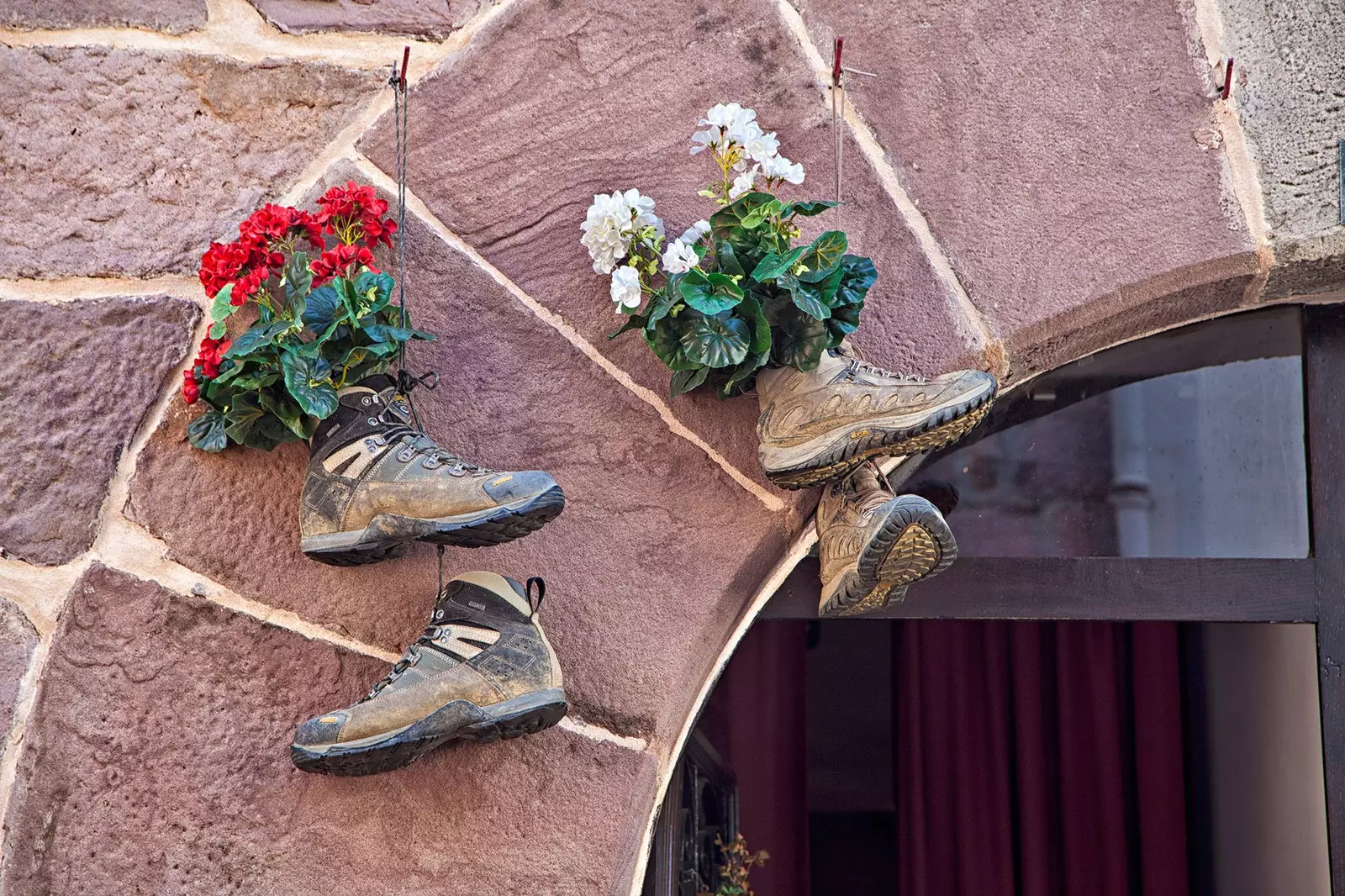
The same during the Camino you realize that you are more of sandals than boots
BOOTS
How do I know that the boots I am going to buy are the right ones? What's more, do I necessarily have to wear boots? “Sandals, boots, slippers… whatever you wear. Does not matter. Trekking boots are not necessary. You need comfortable shoes with a rigid sole, or, well, sandals too. What you are used to." Martínez-Cava sentence.
Probably, while reading this article you are not used to one thing or another and you are thinking about what day you have time to go buy some boots / slippers / sandals and how you are going to choose.
“The foot inside has to be loose , that the boot is not just right, that it is even half a size longer so that the fingers can move well and that the boot holds the foot well” , recommends the podiatrist I.M.P.
TO STRETCH
If after playing sports in the gym you spend a few minutes stretching, why not do the same after spending four hours walking? "There is very little awareness of how important it is to prepare for such a trip and how convenient to take care of yourself during it" Hernandez reflects.
“I think he was one of the few pilgrims who began to stretch after a stage. A good stretching table will not take us more than 20 minutes and feel great after a good shower,” she explains.
“As the thing was not to take the self-massage foam roller with you, I took a tennis ball with me to massage the soles of my feet at the end of each day. This was a real relief."
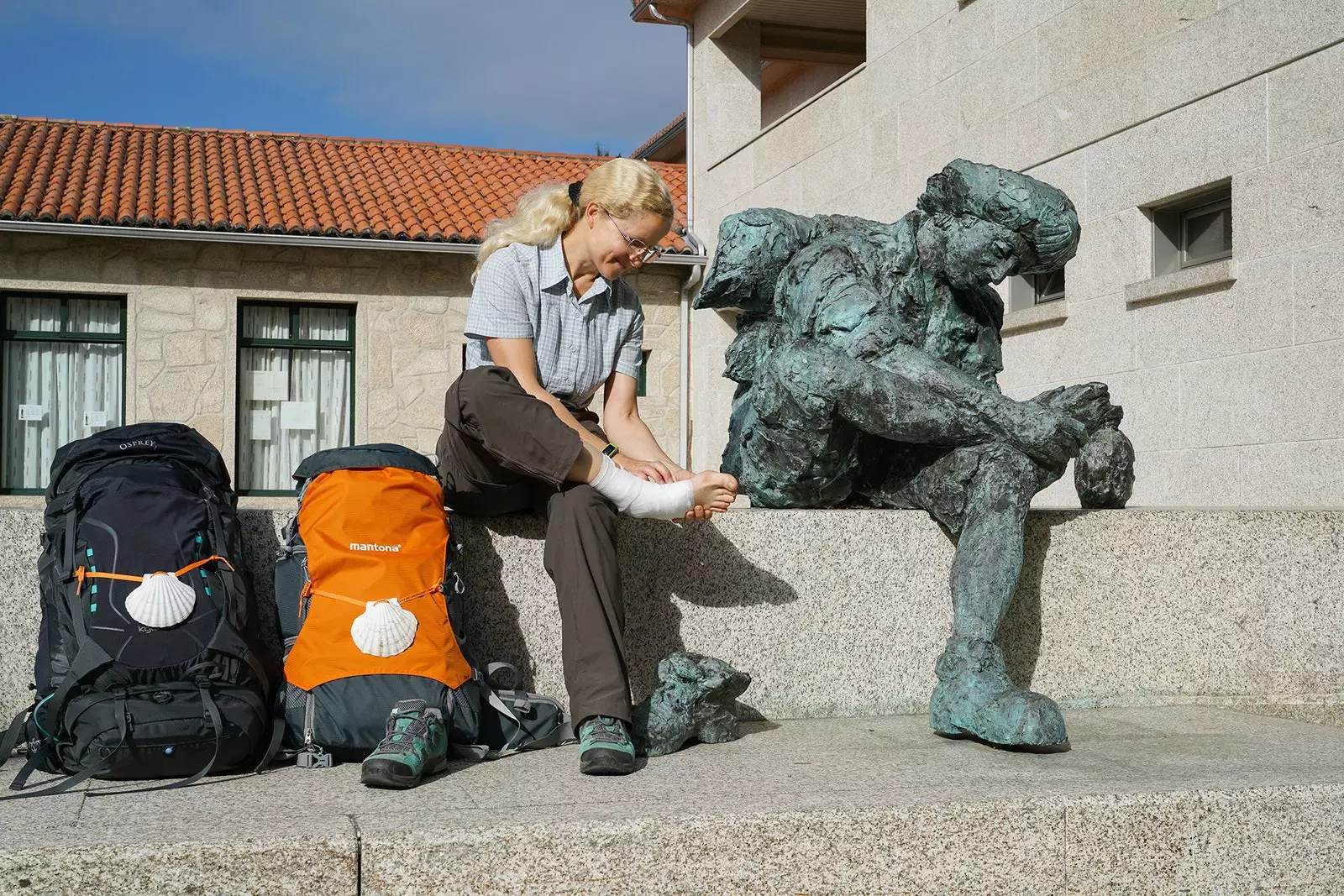
You'll probably meet blisters on this trip
In addition, the physical therapist insists on the importance of "stretching the leg muscles since they take almost all the effort and because it directly affects our lower back. And of course, stretches for the back, shoulders and neck . If you need inspiration, on the YouTube channel of Pilates LAB They have examples that can help you.
FEET
They will support your weight and that of your backpack for kilometers, they will take you as far as you ask and they will teach you that you don't need anything else, that only with them you can be as free as the steps you dare to take. . That's why, As important as the back is that your feet arrive in good condition and already tanned on the Camino.
"I think the best thing is to have your feet well hydrated, your nails very short, and not have calluses or calluses", M recommends.
During the Camino, maintenance continues. “What we should do is put an anti-friction before starting the Camino in the morning, with a cotton sock that is well adjusted to the foot so that it does not make creases and, once we have finished the day, give him a moisturizing, relaxing cream, points out the podiatrist.
Ángela Fernández, a nurse who completed a section of the French Camino de Santiago in the summer of 2018, speaks along the same lines. “As a routine, it came in handy for me wash my feet, dry them well and put Vaseline on them in the morning before I go out. At night, when I went to bed, I smeared my feet well in Vaseline and put on some socks to absorb and hydrate well to have the skin as strong and healthy as possible”.
BLISTERS
They do not have to appear, but we are not going to deny it: there is a high probability that they will make an appearance. Why? “The main reasons on the Camino de Santiago are the pressure, friction, and excess moisture. Fernandez explains.
Knowing this, we can try to prevent them by going to the source. “In the case of pressure, they are those blisters that are produced by wearing inappropriate footwear like, for example, boots that squeeze you in a certain area or are not padded enough. For that, they come in handy anti-blister socks because they are super reinforced, as padding in points where greater pressure can be exerted, such as the bony protuberances of the ankle, the top of the fingers or where the arch of the foot ends”.
If the cause is friction, rubbing, "for this Preliminary skin care is very good: put Vaseline on us, that they are well hydrated, try not to weaken the skin”, letting the feet breathe. In addition to, of course, "wearing a shoe that you already have adapted to your foot so that there are the least friction zones”.
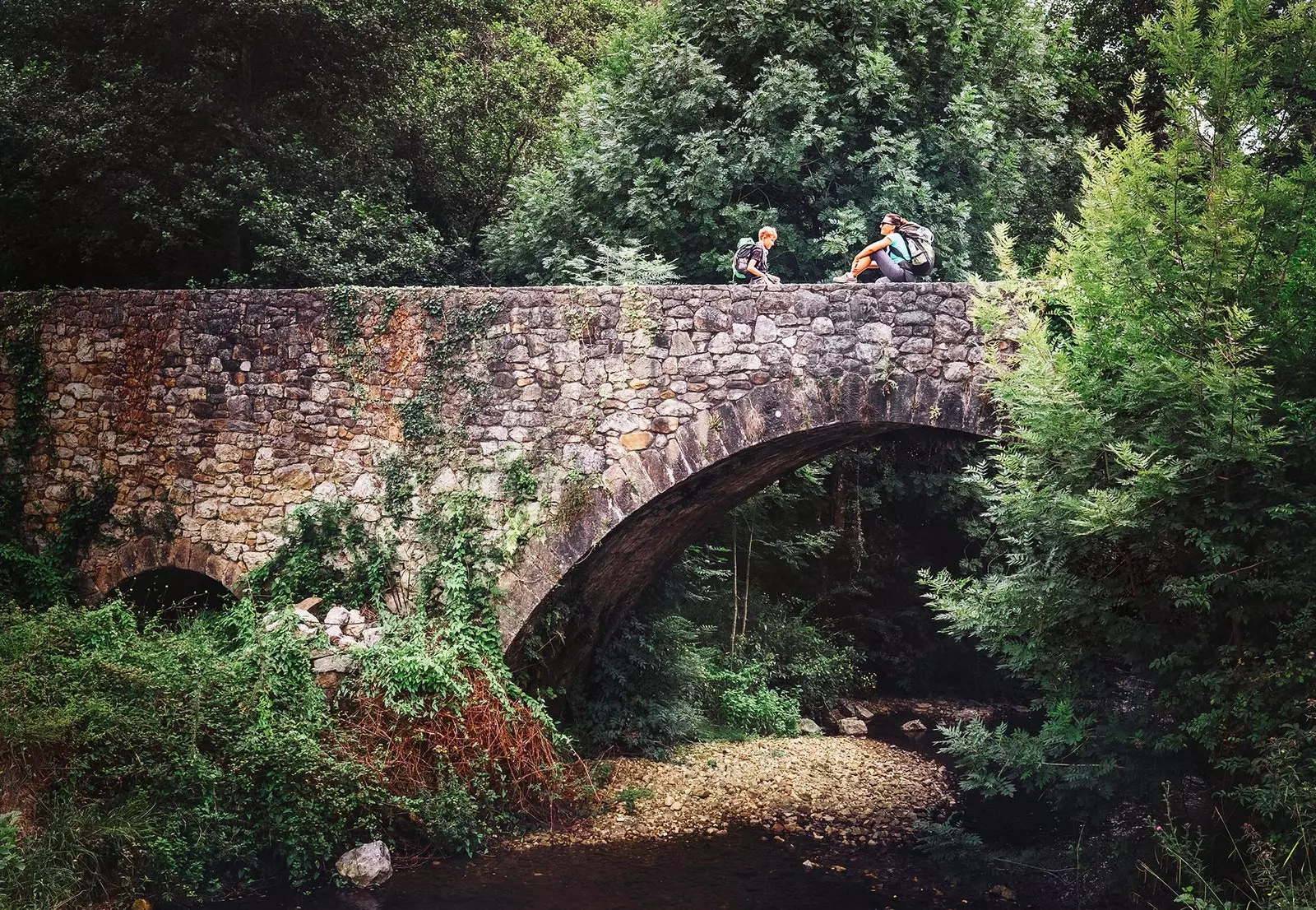
The Camino is for this, to enjoy
Regarding humidity, Fernández gives as an example how our fingers wrinkle when we spend a lot of time in the pool. “The same thing happens in the feet due to the sweat itself. That's why, It is important to change our socks and always wear them dry. When we make a stop, we have to take off our boots to let our feet air out”. And above all, “do not continue with the boots the rest of the day, wear flip flops and try to have the foot as exposed as possible so that it doesn't have too much moisture.
If even this information does not help you to avoid blisters, you will have to face them in two possible scenarios: broken (when we have lost the first layer of skin) or not (when we still have it). In the first case, we can “use some type of hydrocolloid, which are those dressings that simulate the skin, like, for example, the famous Compeed or other brands”, explains Fernández.
However, it must be taken into account that "once they are placed, these dressings cannot be removed, they have to fall off on their own because they are designed to maintain the ideal moisture conditions inside that wound so that it heals. They can fall after 15 days and, if so, they have to be there for 15 days. If we remove them, it is very likely that we will drag the new skin with the dressing that was growing underneath.”
And importantly, and here Fernández insists, “You only have to put this type of dressing when there is a break in the skin. That is, when there is a blister that has already exploded or a friction. When the ampoule is still closed it is of no use and, in fact, it is not recommended at all. One of the causes of blisters is overhydration: the blister fills up and if we also close it, it will not be able to drain anywhere, with which there will be overhydration and even more blisters will be generated”.
It is in these cases that the debates about how to deal with a blister: Drain it or not drain it? with string or without? to leave it inside or not?… “The ideal would be to wash your feet well with soap and water, dry them very well and, with a needle and thread, cross the ampoule from side to side and remove the needle so that the thread remains inside. I recommend tying a knot at both ends of the thread so as not to lose the beginning or the end inside the vial. Finally, we cover it with a normal dressing, type band-aid, and we leave it like that. If, for example, we have done the cure in the morning, we would change it in the afternoon”, explains Fernández.
As for the needle, he recommends that they be sterile. They cost very little and you can buy a few at a pharmacy a few days before the Camino and take them with you. Even if it's just for you, you can reuse your own needle and you don't have to throw it away all the time. If not, there is the boy scout technique: burn a needle with a lighter to sterilize it”.
Regarding the thread, which is used to drain the blister, "it must be done in a context as clean as possible because also by leaving a thread inside the blister so that it continues to drain and does not fill up again, the piece of thread serves as drainage but also makes it a source of infection and, therefore, it is very important to keep changing that thread”.
CANES, YES OR NO?
"Yes". Martínez-Cava does not hesitate to advise the use of “two telescopic batons , you fold them and put them in the backpack”. And it is that “the canes they take up to 25% of the effort out of walking and, furthermore, if you go with poles, you are also moving the entire upper body of the body. On climbs, they are very important because you can push and it takes weight off you, and on descents they are essential because the knee strike is important”.
Therefore, “two canes and, when it rains or it is very sunny, you take out the umbrella and go with only one cane”. Yes, an umbrella, preferably windproof.
UMBRELLA
The surprise of your luggage. It's more, “umbrella and light raincoat”, advises Martínez-Cava. “For the rain, the raincoat; Y umbrella for the sun, which is used much more on hot days. In summer at two in the afternoon or 12 in the morning, the umbrella is ideal”.
WHY DO SOME PILGRIMS CARRY A SHELL?
“The shell is a very ancient symbol, It is an erotic symbol of the goddess Venus. , explains the president of the Association of Friends of the Caminos de Santiago in Madrid.
So how did it end up in the pilgrims' backpack? “The custom began to collect a scallop when arriving in Galicia and take it as a souvenir. From there, it became a symbol.
“At this time or 30 years ago, when the Camino de Santiago was declared the first European Cultural Route, the scallop shell directed to the left indicates that all roads converge at one point, in Santiago” , your destination, the place to which you pilgrimage and for what we wish you "Good journey!", because on the Camino the "hello" is not customary, the "Good way!".
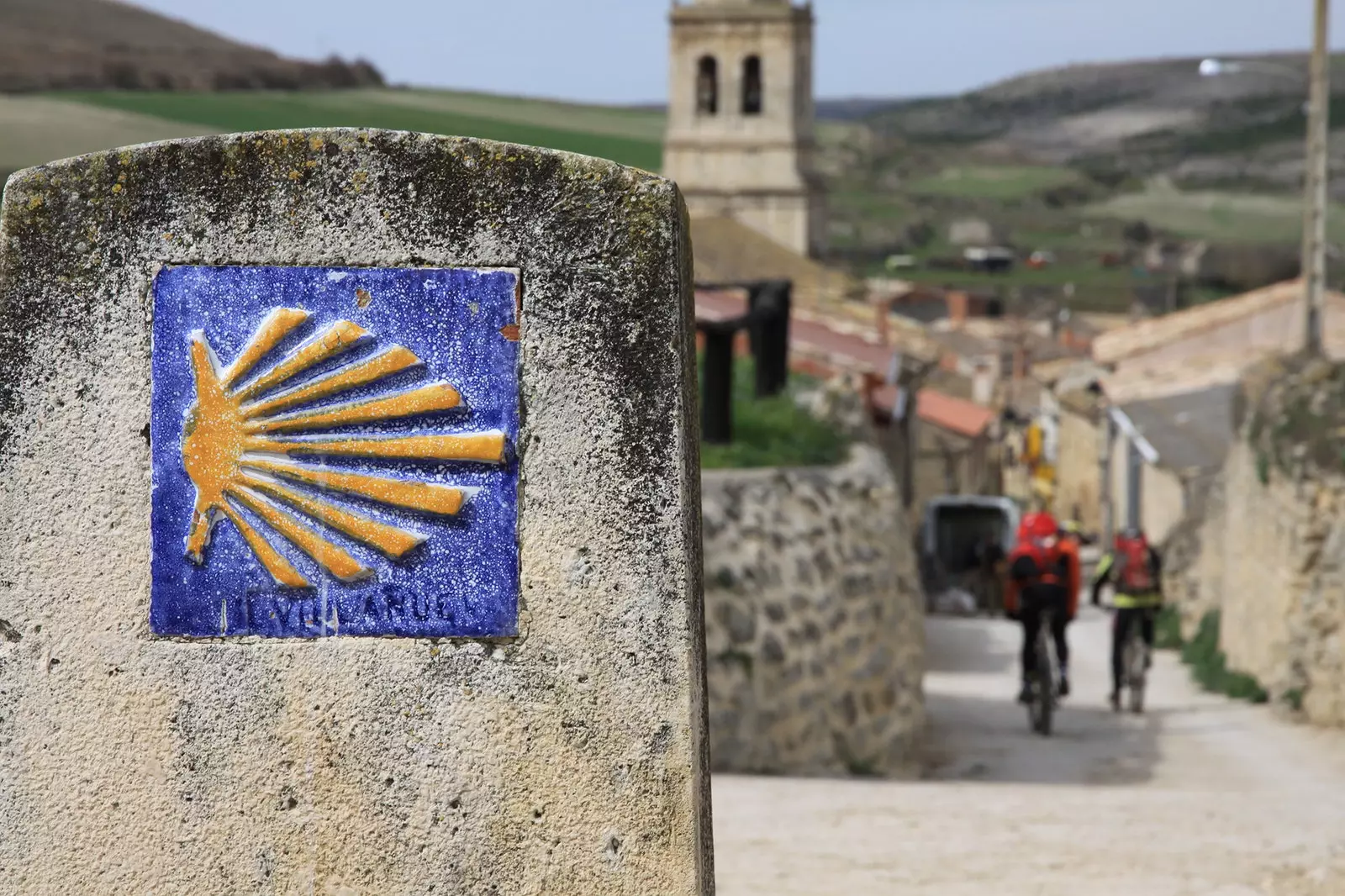
Good way!
